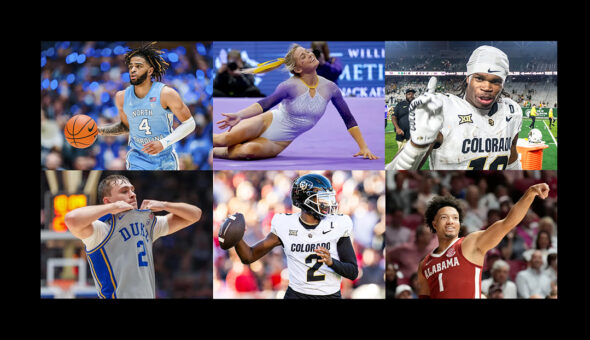As colleges vie to capture the interest of prospective students and families, alternative rankings have grown as a response to long-standing criticism of traditional college rankings. Unlike conventional metrics that emphasize selectivity and prestige, alternative rankings highlight qualities like student satisfaction, campus culture and affordability, giving prospective students a more nuanced perspective on what each institution has to offer.
Goodbye, US News? Alternative rankings are reshaping higher ed.
Alternatives like Colleges That Change Lives and FindaBetterU are shifting the focus from prestige to student satisfaction, campus culture and affordability.

Changing Parental Perspectives
Dayana Kibilds, vice president of strategy at Ologie, a marketing agency specializing in higher education, explained that students and parents today look beyond traditional lists.
“Parents are increasingly critical of rankings,” she noted, “focusing more on finding environments where their students will thrive.”
Platforms such as College Confidential and Reddit forums are becoming popular for families seeking unfiltered insights into campus life, adding layers of information that traditional rankings might overlook.
Kibilds sees a trend of parents using alternative rankings to find “more specific information,” especially for those who approach college as more than a transaction. She advises colleges to leverage these alternative rankings thoughtfully in their marketing.
“Rankings serve as proof points,” she said, “but they need to be backed up by specific stories that demonstrate community and mentorship.”
For Kibilds, the storytelling aspect is key, as schools need to offer more than just descriptors like “community” and “experiential learning” — they should illustrate these concepts with real, relatable examples.
Differentiating through Alternative Recognition
Alternative rankings offer unique advantages for institutions looking to differentiate in an increasingly competitive landscape. For colleges like Hope College, being a part of Colleges That Change Lives allows them to highlight student-centered experiences that larger universities often can’t match.
Nate Haveman, Hope College’s vice president of enrollment management, emphasized that CTCL isn’t a ranking in the traditional sense but a group of colleges dedicated to promoting “a student-centric college application process.” The CTCL designation, he said, provides prospective students with a textured view of what Hope offers without the numeric rankings.
This holistic approach is reinforced by FindaBetterU’s founder, Brady Norvall, who wishes more families were aware of alternative rankings like CTCL.
“CTCL colleges are for people who care about their whole selves,” he said, contrasting the nurturing environment of these schools with what he describes as the “status-driven” appeal of elite institutions. Norvall finds that alternative rankings resonate particularly with families focused on fostering a supportive, challenging community for their students, though financial constraints can sometimes limit their options.
The Role of ROI and Career Readiness
For many college counselors, the value of alternative rankings lies in their ability to help students focus on fit rather than prestige. Yvonne Espinoza, a certified educational planner, advocated for a “best-fit” approach, guiding students to examine specific aspects of college life — such as campus culture, academic offerings and support systems — over institutional prestige.
“The traditional rankings don’t account for all the aspects that contribute to a student’s success and happiness,” Espinoza explained, encouraging students to prioritize community, diversity and learning styles in their search.
Indeed, Espinoza sees ROI, or return on investment, as a growing concern among parents, especially those navigating the often-conflicting landscape of financial aid and post-graduation employment opportunities. She finds that alternative rankings can offer more tailored insights, like opportunities for co-op programs and paid internships, which help students graduate with practical experience.
“The more information families have,” she added, “the better equipped they are to make a decision that aligns with their values.”
Balancing Traditional and Alternative Rankings with Transparency
Institutions that emphasize alternative rankings are also addressing the demand for transparency around outcomes and career readiness. Kibilds advised schools to take a proactive approach by breaking down graduation and employment rates and sharing stories of recent alumni successes. Haveman at Hope College echoes this sentiment, noting that Hope’s messaging goes beyond rankings to highlight student and alumni achievements, offering families a richer narrative about the long-term benefits of attending Hope.
While alternative rankings may appeal to students with prior exposure to higher education, traditional rankings remain relevant, particularly for first-generation and international students. For these students, rankings from U.S. News and Princeton Review offer a sense of familiarity and credibility as they begin their college search.
“Disregarding traditional rankings is a privilege,” Kibilds cautioned, noting that many first-time college applicants rely on these established lists to narrow down their options. She suggested that colleges seeking to attract these students should balance the promotion of alternative and traditional rankings to reach a broader audience.
At St. John’s College, alternative rankings like Princeton Review’s “best classroom experience” and “most accessible professors” reflect the school’s values better than generalized rankings. Vice President of Enrollment Benjamin Baum critiqued U.S. News for metrics that lack student-centered perspectives.
“The best rankings allow prospective students to prioritize their values,” he said. Baum notes that being recognized in areas like career services and student-faculty interaction helps St. John’s communicate its strengths more effectively, sidestepping the pitfalls of one-size-fits-all rankings.
Empowering the Student-Centered Search
Ann Marano, executive director of Colleges That Change Lives, champions an approach to college selection that repositions students as active drivers in their search. She urged them to question what traditional rankings measure and weigh and whether those factors resonate with their values and aspirations.
“CTCL encourages students to create their own ranking system based on what matters most to them,” she explained, emphasizing the importance of considering elements that promote personal and academic growth, such as mentorship, campus culture and student support services. Marano highlights how CTCL’s community of colleges values collaboration over competition and provides pathways that align with a student’s identity, lived experiences and goals.
Through this student-centered approach, Marano believed CTCL member institutions empower students to choose schools that align deeply with who they are and who they hope to become. “We remind students that they have so many choices,” she said. “And they don’t need to shape themselves into someone else’s vision to find success.”
Marano underscored that CTCL’s mission is to reframe the college search so students see their unique attributes and ambitions as assets, promoting a diverse array of learning experiences, whether through small discussion-based classes, study-abroad programs or campus organizations.
Integrating Rankings in a Shifting Landscape
As interest in alternative rankings grows, institutions are finding new ways to integrate these accolades into their messaging strategies. Kibilds recommended that colleges use digital channels like social media and paid ads to reach prospective students who might not yet be familiar with the value of alternative rankings. By placing these messages directly in front of prospective students, colleges can create a bridge between traditional perceptions of prestige and more personalized approaches to higher education.
Ultimately, the rise of alternative rankings reflects a changing landscape in which students and families are increasingly aware of the limitations of traditional measures. For some, the focus remains on name recognition and perceived status, while others are drawn to schools that prioritize mentorship, experiential learning and community engagement. Baum believed that while traditional rankings have a place, alternative rankings provide a more customized view of college success.
“In a world of countless rankings,” he concluded, “the most valuable metric is the one that aligns with a student’s individual priorities.”
Through this shifting landscape, colleges are finding that a balanced approach — one that embraces both traditional metrics and alternative rankings — is key to meeting the diverse needs of today’s prospective students.
Newsletter Sign up!
Stay current in digital strategy, brand amplification, design thinking and more.
Recent in Enrollment
Also in Student Experience

The NIL Top 10: Who are the highest-paid college athletes?
Growing collective contracts and sponsorship deals have university athletes — both men and women — raking in record paydays.

College admissions try to balance innovation, ethics and equity.
As AI becomes more integrated into college admissions, institutions are navigating the challenges of maintaining fairness and transparency in the process.

Higher ed administration gets AI boost.
Working through legitimate concerns, higher ed leaders are finding dynamic ways to integrate AI technology across campus offices.



